
E-mail: font@focusonnature.com
Phone: Toll-free in USA 1-888-721-3555
or 302/529-1876
 |
PO Box 9021,
Wilmington, DE 19809, USA E-mail: font@focusonnature.com Phone: Toll-free in USA 1-888-721-3555 or 302/529-1876 |
Photos
of
BIRDS
And some
OTHER NATURE
IN
Ecuador
during the
Focus On Nature Tour
in April-May 2014
All of the photographs that follow were taken during that tour
by tour participant Marie Gardner - ©
- all rights
reserved.
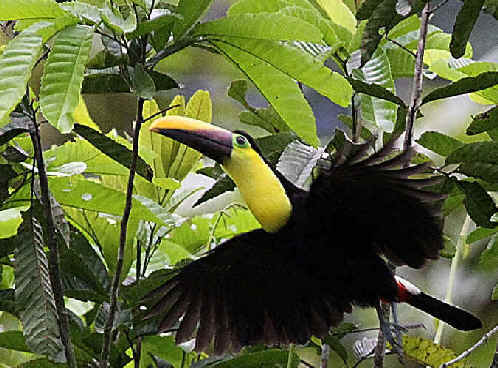
A
Chestnut-mandibled
Toucan,
one of the more than 250 species of birds
during our tour in Ecuador in April-May 2014
Links:
A List of Birds during the FONT April-May 2014 EcuadorTour
A List & Photo Gallery of Ecuador Birds, in 4 Parts
A List & Photo Gallery of South America Butterflies, in 5 Parts
Upcoming FONT Birding & Nature Tours in Ecuador
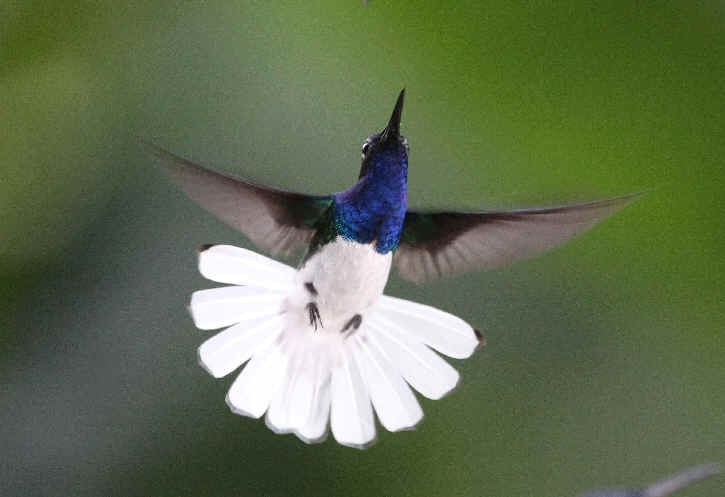
During the FONT tour in
Ecuador in April-May 2014,
32 of the species of birds were hummingbirds.
Here is one, the White-necked Jacobin.
With, as you can see, having more than just a white neck.
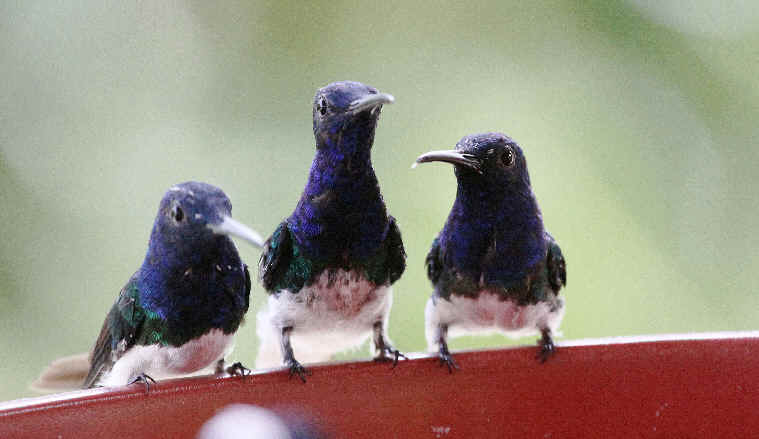
Here, and below, 3 jacobins.
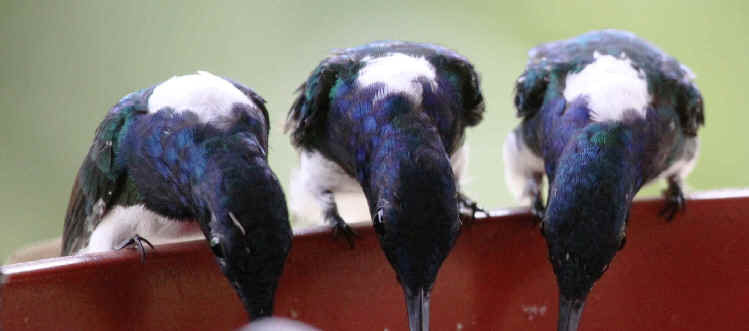
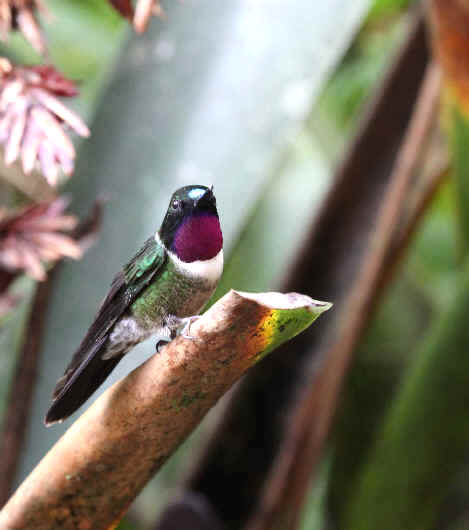
Another hummingbird that we saw in southern
Ecuador
was the Amethyst-throated Sunangel.
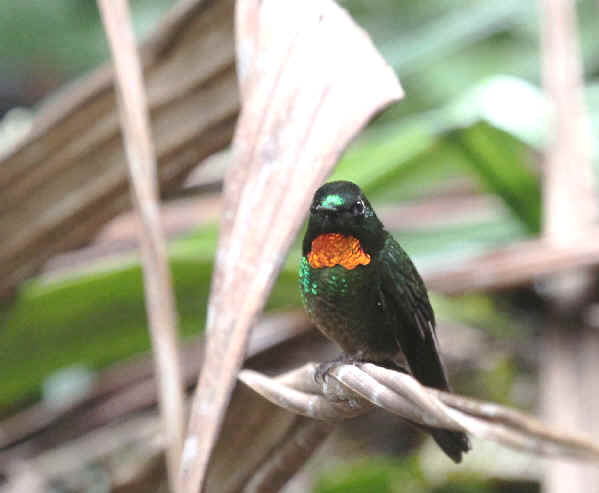
Another hummingbird, another sunangel,
this one is the Flame-throated Sunangel
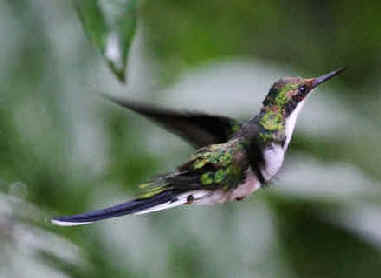
This hummingbird is a mostly "Amazonian" species,
seen when we were in southeastern Ecuador,
the Black-eared Fairy.
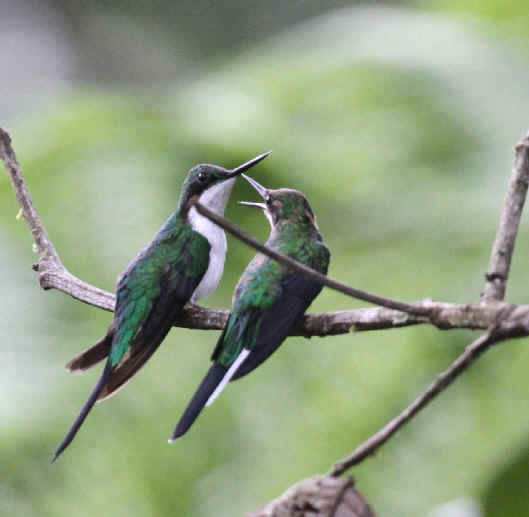
Here, two Black-eared Fairies,
one an adult, and the other its offspring.
In the photo below, the adult is feeding the young bird,
by putting its long bill into the youngster's mouth.
Something that we watched during the tour,
that is certainly not seen everyday.
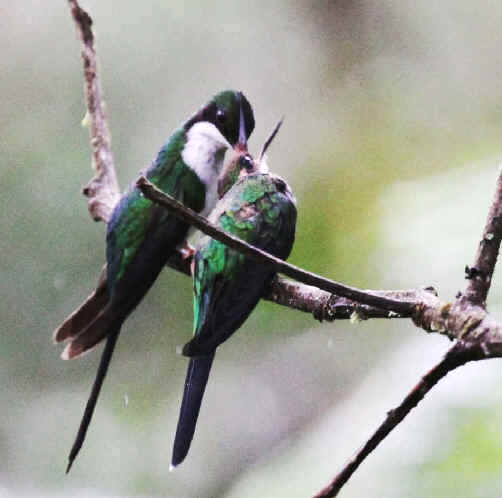
To see more hummingbirds photographed during the tour:
HUMMINGBIRDS, with the SUNANGELS, the FAIRY, and OTHERS
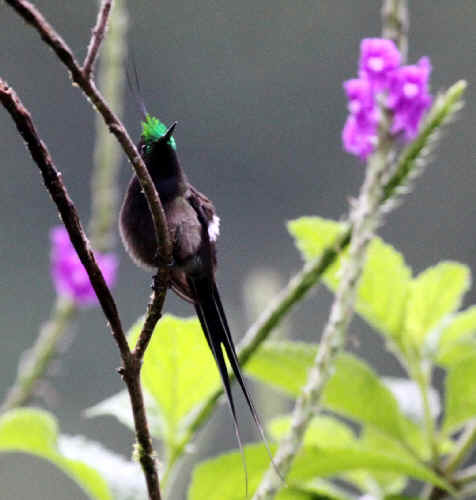
Yet another nice hummingbird during our tour
was the Wire-crested Thorntail.
If you look closely at this photo of a male,
you can see that the long tail extends all the way
to the bottom of the picture,
and that the crest extends a long way in the other direction.
And to see photos of even more hummingbirds:
HUMMINGBIRDS with the
THORNTAILS, JACOBIN, and OTHERS
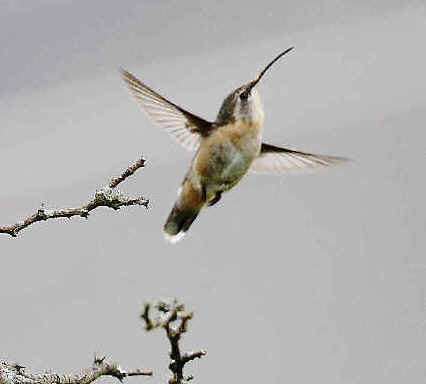
This hummingbird does not have
such strong features as the others above,
but nonetheless it is interesting.
It is said to be an undescribed subspecies
of either the Loja Hummingbird, or the Amazilia Hummingbird,
depending upon the taxonomy.
We saw this bird in a high and rather arid area
in the southern part of the Azuay province.
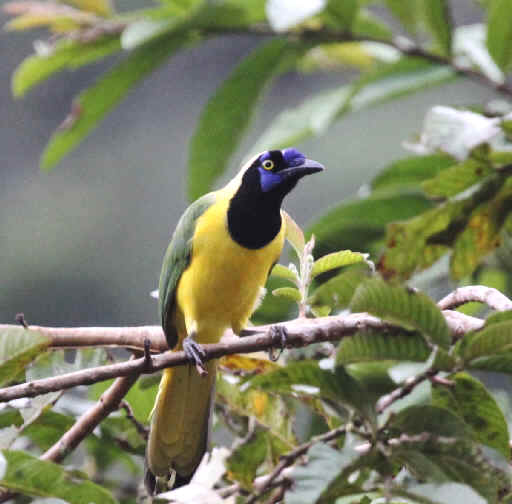
Birds of course other than hummingbirds
were seen during our April/May 2014 Ecuador Tour.
Although this bird appears to the Green Jay,
known to North American birders as being in Texas,
it is actually its southerly cousin, the Inca Jay.
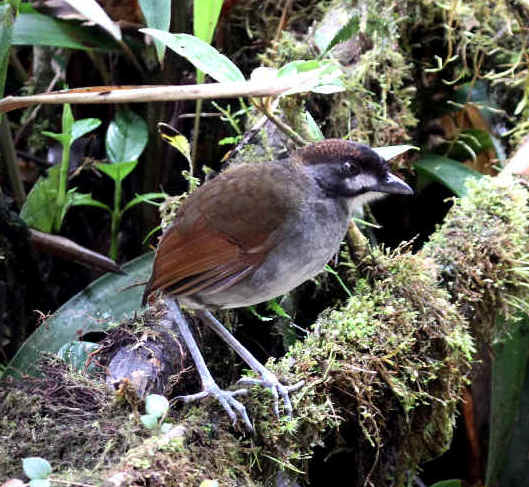
One of the birds that we most wanted to see, we did.
This photograph was taken during our tour
of the Jocotoco Antpitta,
a rare and localized species
that was discovered as recently as in 1997.

On another day during our tour,
at another place in southern Ecuador,
actually at a traffic circle,
we came across a large statue
of that bird discovered in 1997.
Even though it was a foggy day,
a couple of us had our photo taken:
At left: Armas Hill,
at right: Fred Lesser.
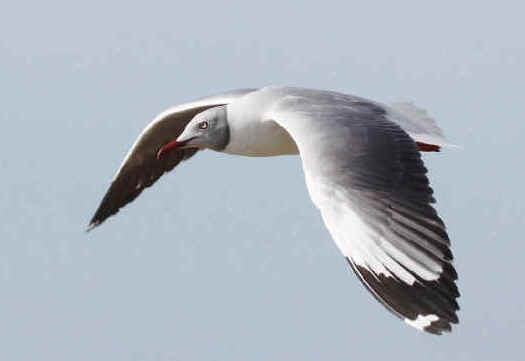
Along the seacoast in Ecuador,
an attractive Gray-hooded Gull in flight.
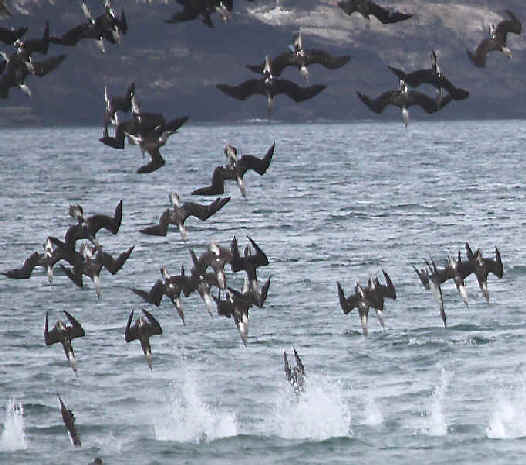
Just offshore, and photographed from a beach,
a feeding frenzy of diving Blue-footed Boobies
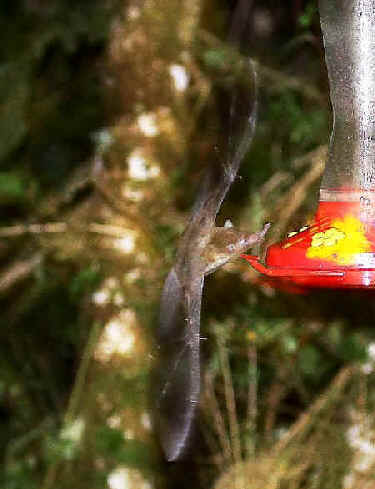
A Tube-lipped Nectar Bat
photographed after dark.
So quickly it, and others, flew
to and from the hummingbird feeders,
yet this photo shows part of the tongue,
the longest tongue in any mammal
in relation to the size of the mammal.
It goes in as far as the ribcage.
This bat, of the subtropical Andean forest,
was described to science as recently as in 2005.
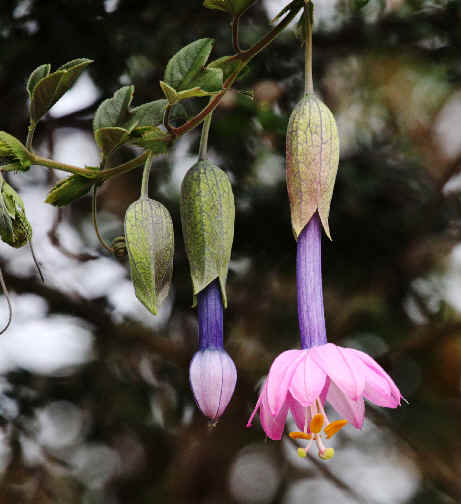
A plant that's frequented by hummingbirds,
and butterflies, and probably moths and bats,
a Passion-flower, Passiflora tripartita,
photographed during our tour,
in the Andes Mountains.
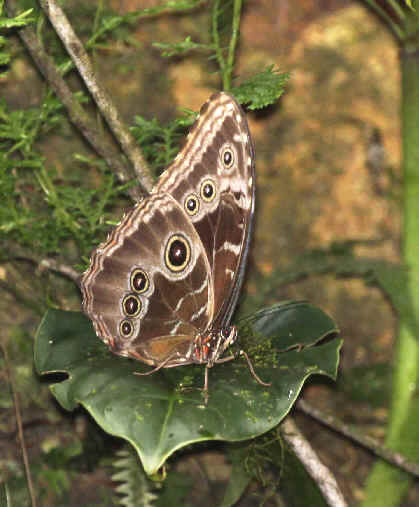
One of the butterflies that we saw,
bright blue when it flew,
was Morpho helenor bristowi,
the widespread Blue Morpho,
always nice to see wherever we do.
For more butterflies,
including others photographed during the tour:
SOUTH AMERICAN BUTTERFLIES, the BRUSHFOOTS
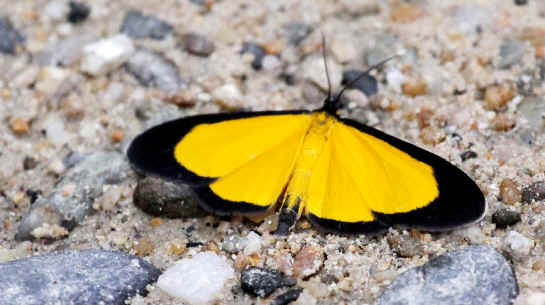
This is not a butterfly, but a moth.
In the family Geometridae, a diurnal moth named
Smicropus eucyrta.
To see photos of more moths and butterflies
during FONT tours in Ecuador:
SOME ECUADORIAN MOTHS & BUTTERFLIES
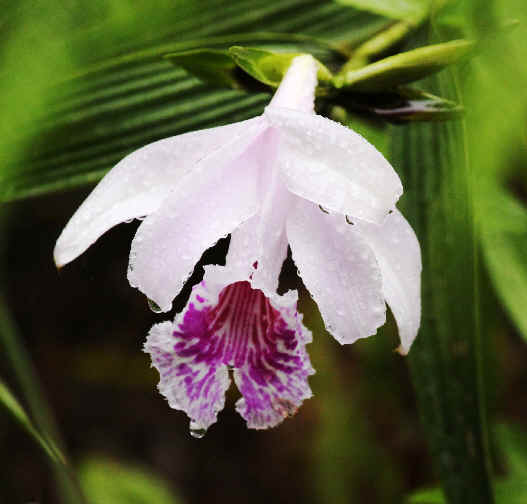
An orchid seen during our tour,
called Sobralia rosea.
On mountainsides in southeastern Ecuador,
when we were there,
it was quite common.
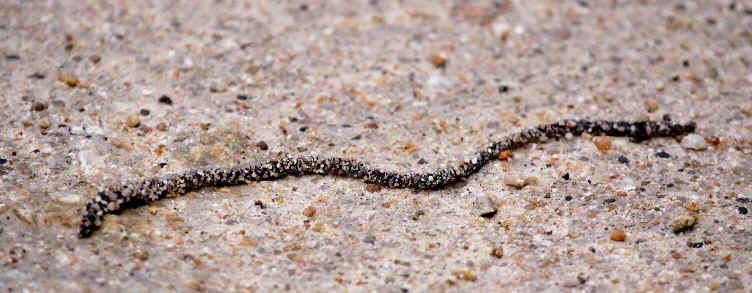
Our last photo here is of a creature we saw early one morning
in southern Ecuador.
It is the Black-and-white Worm Lizard,
also called the Speckled Worm Lizard,
Amphisbaena fuliginosa.
Generally, it is fossorial, that is living underground.
It is a limbless, burrowing, usually nocturnal reptile.
Up to 12 to 18 inches long, it feeds on small invertebrates or insects.
Underground, it digs by using its head as a simple battering ram.
It then pushes its head in different directions to pack soil.
Amphisbaena fuliginosa is found in northern South America,
and south on the continent
as far as the cerrado habitat in Minas Gerais, Brazil.
Here, we've shown just some
of what was interesting
during the FONT April-May 2014 tour
in Ecuador.
Top of Page